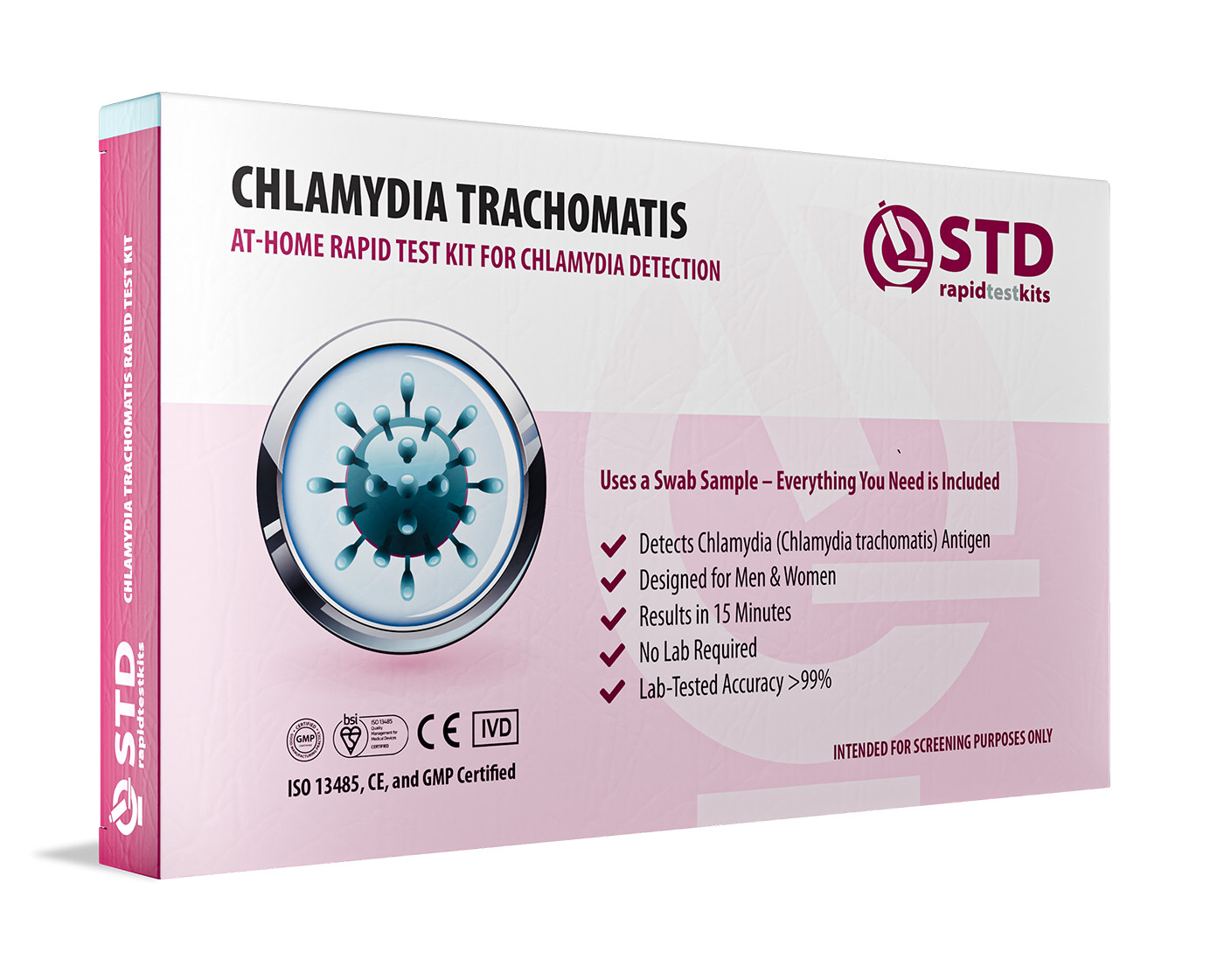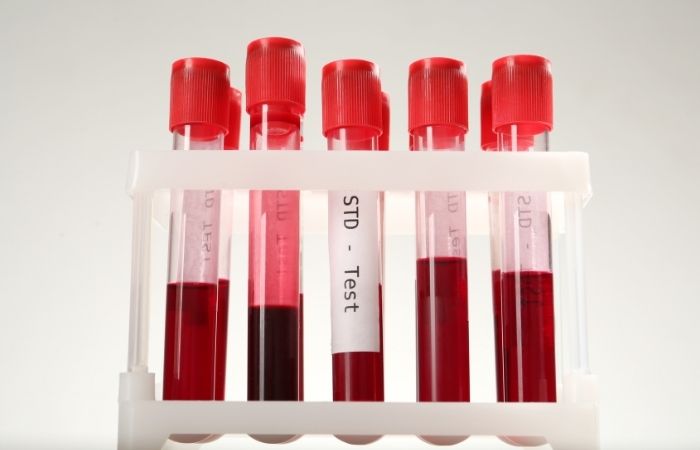Quick Answer: Chlamydia often presents differently in men and women, if it shows up at all. Men may notice pain, burning, or discharge. Many women feel nothing until serious complications develop. Regular testing is the only way to know for sure.
Why This STD Hides in Plain Sight
Chlamydia is one of the most common sexually transmitted infections, especially in people under 25. But what makes it particularly dangerous is that it rarely screams for attention. According to the CDC, around 70% of women and up to 50% of men with chlamydia have no noticeable symptoms. That’s not just inconvenient, it’s a public health nightmare.
Because the infection often travels silently, it keeps spreading. And when symptoms do show up, they’re often confused with other issues: a urinary tract infection, irritation after sex, or just general body weirdness. The silence isn’t neutral. For many people, it’s a delay tactic that lets chlamydia do real damage before anyone catches it.
And here’s the kicker: even when symptoms do show up, they don’t show up the same way across genders, or even consistently within one. That’s why relying on “how you feel” is a gamble, not a plan.
How Chlamydia Typically Shows Up in Men
For people assigned male at birth, chlamydia tends to be more noticeable, but not always right away. Andre, in the micro-scene above, noticed burning with urination. That’s one of the textbook signs, along with discharge from the penis and discomfort in the testicles. But even these can be subtle at first. Some men feel a vague discomfort they write off as nothing. Others mistake it for friction from a condom or irritation after rough sex.
There’s also the emotional side. Many men feel intense shame or anxiety when symptoms suggest an STD. This can delay seeking help, even when signs are obvious. One Reddit user described his hesitation: “It burned, but I thought maybe I hadn’t been drinking enough water. I couldn’t bring myself to admit it might be something serious.”
When untreated, chlamydia can cause epididymitis, a painful inflammation of the coiled tube at the back of the testicle. In rare cases, this can lead to infertility. But many men never reach that point. Either they test proactively, or symptoms push them to act. That’s why awareness matters: discomfort shouldn’t have to be the signal that wakes someone up to risk.

People are also reading: This Common STD Could Be Why Your Testicles Hurt
What Chlamydia Looks Like in Women (Or Doesn’t)
For people assigned female at birth, the picture is even trickier. Most women with chlamydia don’t experience early symptoms at all. And when they do, they’re often vague: spotting between periods, a change in vaginal discharge, pelvic discomfort, or pain during sex. These can all be written off as hormonal fluctuations, stress, or even dietary shifts. That’s what happened to Riley.
She never guessed chlamydia was the reason her lower back ached after sex or why her period felt heavier and more crampy than usual. Her routine Pap smear caught the infection. Without it, she might have kept going until the damage became irreversible.
Left untreated, chlamydia in women can lead to pelvic inflammatory disease (PID), which damages the uterus, fallopian tubes, and ovaries. This raises the risk of chronic pelvic pain, ectopic pregnancy, and infertility. The tragedy? All of it is preventable with timely testing and treatment.
| Gender | Common Symptoms (If Present) | Common Misdiagnosis | Risks If Untreated |
|---|---|---|---|
| Men | Burning urination, penile discharge, testicular pain | UTI, prostatitis, friction irritation | Epididymitis, infertility (rare), continued transmission |
| Women | Spotting, pelvic pain, painful sex, unusual discharge | UTI, yeast infection, hormonal changes | PID, infertility, ectopic pregnancy |
Table 1. Gendered patterns of chlamydia symptoms, misattributions, and risks when untreated.
Order Now $33.99 $49.00 Check Your STD Status in Minutes
Test at Home with Remedium
Chlamydia Test Kit




The Danger of No Symptoms at All
The phrase “silent STD” isn’t just a dramatic nickname, it’s a brutal truth. Chlamydia’s silence has consequences. Just because someone isn’t itching or burning doesn’t mean they’re in the clear. The infection can still be active, transmissible, and slowly causing harm.
That’s why public health authorities recommend routine screening for sexually active individuals under 25 and for older individuals with new or multiple partners. The U.S. Preventive Services Task Force emphasizes that routine screening is essential precisely because symptoms are so unreliable.
In one study published in the journal Sexually Transmitted Diseases, researchers found that over 80% of women diagnosed with chlamydia were asymptomatic at the time of testing. That number alone should be a wake-up call.
The idea that “I feel fine, so I must be fine” doesn’t hold up when dealing with infections that specialize in staying quiet until they’ve caused lasting damage.
If you're reading this with a knot in your stomach because you don’t remember any symptoms, but you're still worried, that feeling is valid. You don’t need symptoms to justify testing. You just need clarity.
When Symptoms Do Show, Here’s What to Watch For
Despite chlamydia’s stealth, symptoms do show up for many people. When they do, they often arrive between 1–3 weeks after exposure, but this isn’t a hard rule. The timeline can vary depending on your immune system, co-infections, and whether it’s your first exposure or a repeat infection.
Here’s how symptoms might play out:
In men, the first sign of trouble is usually burning when they pee. Chlamydia can cause inflammation in the urethra that looks like a bladder infection. It's also common for the tip of the penis to leak clear, cloudy, or even slightly yellow fluid. Some men say that one or both of their testicles hurt or swell.
In women, common signs include spotting between periods, pain during sex, and more vaginal discharge. But dull, constant pain in the pelvis is a symptom that is often missed. It may feel like cramps during your period or pain in your lower back, but it's your reproductive system telling you something is wrong.
It’s important to note that these signs aren’t exclusive to chlamydia. They overlap with other STDs like gonorrhea and even non-STD conditions. That’s why the next step shouldn’t be guessing, it should be testing.
And no, it’s not weird or overreacting to test after a new partner, a condom slip, or just a gut feeling. It’s smart. It’s self-respect. It’s care.
Testing: What Works for Each Gender
When it comes to testing, chlamydia doesn’t care about gender, but your body does influence how the test is done. For men, testing typically involves a urine sample. It's quick, non-invasive, and easy to do at home or in a clinic. For women, the most accurate option is usually a vaginal swab. This can be self-collected or done by a provider. Both methods use NAAT (nucleic acid amplification testing), the gold standard for chlamydia detection.
The key is choosing a test that fits your anatomy and your comfort level. At-home kits have improved dramatically in recent years, offering high accuracy rates with clear instructions. Some even let you choose your sample method, urine, swab, or both, based on your sex assigned at birth.
Still, one thing remains universal: timing matters. Testing too early can lead to false negatives because the bacteria hasn't multiplied enough to be detected. Most experts recommend waiting at least 7–14 days after a potential exposure for reliable results. That doesn’t mean you can’t test earlier, but know that a second test may be needed.
| Testing Type | Best Sample for Men | Best Sample for Women | Typical Window Period | At-Home Options? |
|---|---|---|---|---|
| NAAT (Lab or At-Home) | First-catch urine sample | Vaginal swab (self or provider) | 7–14 days post-exposure | Yes |
| Rapid Antigen Test | Swab (less common) | Swab (less common) | Varies, usually 7–10 days | Sometimes |
Table 2. Comparison of chlamydia testing methods by gender and timing recommendations.
If you’re in that awkward zone, just a few days post-hookup and panicking, you’re not alone. The urge to test immediately is real. But here’s what’s more helpful: test now if it eases your mind, then test again at the 14-day mark for accuracy. That’s the balance between peace of mind and scientific certainty.
What If You’re Positive? Gendered Realities of Treatment
The good news? Chlamydia is curable. The standard treatment is a short course of antibiotics, usually a one-time dose or a week-long regimen. It’s highly effective when taken properly. But here’s where gender differences show up again, not in how the infection is treated, but in how the aftermath unfolds.
For men, treatment typically resolves symptoms quickly. Discharge fades, burning stops, and inflammation settles. Most return to baseline within a week. But they still need to abstain from sex for 7 days after treatment to avoid passing the infection along, or getting reinfected by a partner who hasn’t been treated.
For women, treatment works just as well, but the story doesn’t always end there. If chlamydia has already reached the upper reproductive tract, antibiotics can stop the infection but not reverse damage. That’s why early detection matters so much. The emotional toll is often heavier, too. Women may wonder if their fertility is compromised or if chronic pelvic pain will linger. These aren’t just medical questions, they’re identity-shaking fears.
That’s why support matters. Getting treated is just one part of healing. Knowing what to expect next, and what steps to take, is where peace of mind returns.

People are also reading: How Long Does Hepatitis B Live Outside the Body? (Longer Than You Think)
Don’t Assume Your Partner Will Know They Have It
This part is tough, but essential. If you test positive, your partner needs to know. Not because it’s about blame. Because it’s about care. Chlamydia doesn’t always “announce” itself, especially in women. You might be the only clue they get.
There’s also the reinfection loop. If you get treated and your partner doesn’t, you’ll pass it back and forth without even realizing it. That’s not drama. That’s microbiology.
Many health departments offer anonymous partner notification services, and some telehealth platforms do the outreach for you. You don’t have to do it alone, and you don’t have to be perfect. Just be honest. Say, “Hey, I tested positive for chlamydia. I care about your health too.” That’s all it takes to start the next step.
If your partner tests negative, great. If they test positive, now they can treat it, and stop it from spreading any further. That’s how we take care of each other, even when things get awkward.
Check Your STD Status in Minutes
Test at Home with Remedium7-in-1 STD Test Kit

 For Men & Women
For Men & Women Results in Minutes
Results in Minutes No Lab Needed
No Lab Needed Private & Discreet
Private & DiscreetOrder Now $129.00 $343.00
For all 7 tests
Call It In: When Symptoms Signal Something More
Sometimes, chlamydia isn’t just chlamydia. If you’re experiencing intense pelvic pain, fever, nausea, or heavy bleeding (for women), or testicular swelling and severe pain (for men), it’s time to talk to a provider. These could be signs that the infection has progressed, or that another condition is at play.
In rare but serious cases, untreated chlamydia leads to systemic issues. For women, it can become PID. For men, it can cause epididymo-orchitis. Both require more aggressive treatment and potentially in-person evaluation.
Don’t wait for your body to “push through it.” STD stigma might whisper that you deserve this pain, that it’s your punishment for a hookup or a risk. That’s a lie. No one deserves to suffer silently when a $30 test and a short treatment can solve the issue. If something feels off, you owe it to yourself to investigate, not to blame yourself, but to care for yourself.
If you’re ready to get answers, discreetly and quickly, this at-home combo test kit checks for the most common STDs and puts control back in your hands.
Why You Might Need to Retest (Even After Treatment)
Let’s say you took the antibiotics. You followed the instructions, abstained from sex, and did everything right. Still, your brain won’t quit. “What if it didn’t work?” “What if I got it again?” That spiral is common, and sometimes justified.
Retesting is often recommended about three months after treatment, especially for younger individuals or people with higher risk exposure. Why? Because reinfection happens. Not because you did something wrong, but because chlamydia is sneaky, common, and often symptomless. You could have a new partner. Or your partner may not have fully treated their infection. Or maybe you both did everything right, but didn’t realize you were already passing it back and forth.
There’s also the chance of false positives in the early window after treatment. If you retest too soon, within 3–4 weeks of finishing antibiotics, you could catch leftover bacterial fragments that show up on the test even though the infection is gone. That’s why timing is everything.
For peace of mind, the best retest window is between 12–16 weeks post-treatment, unless symptoms return earlier. And yes, if something feels off again, test sooner. Listen to your body, but listen smart.
What If You're Still Scared?
Chlamydia isn’t just a medical issue, it’s an emotional minefield. Even after treatment, people wrestle with shame, guilt, anxiety, and trust issues. That’s especially true if you’ve been in a monogamous relationship or recently started seeing someone new. The story in your head might be harsher than anything happening in your body.
Riley, whose infection was caught at a routine exam, spent weeks wondering if she was now “damaged.” She worried if she’d still be able to get pregnant, or if every ache was a sign of permanent harm. It took a follow-up visit, a good OB/GYN, and a negative retest to finally let go of that fear.
Andre kept obsessing over whether he’d infected anyone. He messaged a former partner, apologized, and urged them to get tested. That conversation was awkward, but it led to real closure. “I thought he’d be furious,” Andre recalled. “Instead, he said thanks for telling him. That changed everything.”
If you're sitting with that same fear, of being judged, of being broken, of being alone, you’re not. Chlamydia is incredibly common, especially among young adults. It doesn’t make you dirty. It makes you human. And testing makes you responsible.
You’re allowed to be scared. Just don’t stay stuck there. Testing, treating, and telling the truth (to yourself and to others) is how you move forward.
Ready to take that step? STD Rapid Test Kits makes it possible, discreetly, quickly, and without judgment.
FAQs
1. Can you really have chlamydia and feel completely fine?
Yes, and that’s what makes it so tricky, and dangerous. You could be carrying chlamydia for weeks (or months) without a single twinge. It’s not rare. In fact, it’s normal. Many people only find out because a partner tests positive or they happen to get screened during a check-up. Feeling “fine” doesn’t mean you’re in the clear. That’s why routine testing matters, even when nothing feels off.
2. What’s the difference in how chlamydia affects men and women?
For men, chlamydia often shows up as burning pee, a weird drip, or testicular discomfort, things that usually get noticed quickly. For women? Not so much. It might be subtle spotting, cramping that feels like PMS, or absolutely nothing. And while men usually notice when something’s wrong, women often don’t, until the infection has already done damage.
3. If I just hooked up with someone new, how soon can I get tested?
We get it, you want answers now. But here’s the deal: testing within the first 5 days might not catch it. Chlamydia needs a bit of time to multiply before it shows up on a test. The sweet spot for accuracy? 7 to 14 days after exposure. If you're panicking early, you can test, but plan to test again later just to be sure.
4. Does chlamydia go away on its own?
Nope. It might get quiet, but it doesn’t leave. Some people hope it'll just "run its course" like a cold. Spoiler alert: it won’t. Left untreated, it can cause serious complications, especially for people with a uterus. We’re talking long-term pelvic pain, infertility, and riskier pregnancies. The treatment is easy. Ignoring it is not.
5. Can I get chlamydia from oral or anal sex?
Yes, and that’s something a lot of people don’t realize. Chlamydia can live in the throat or rectum, not just the genitals. It doesn’t always show up with symptoms there either, but it’s absolutely transmissible. If your sex life includes oral or anal, make sure your testing strategy does too. Some at-home kits offer throat and rectal swabs, worth checking.
6. What if I test positive but my partner doesn’t have symptoms?
First, deep breath. It doesn’t mean they’re lying or cheating, it just means they might not know. Remember, chlamydia is often symptomless, especially in women. That’s why partner testing is essential. Get treated, get them treated, and hold off on sex until the meds have done their job. No blame. Just biology.
7. Will chlamydia affect my ability to have kids?
It can, but only if it goes untreated for too long. In women, the infection can travel upward, scarring the fallopian tubes and causing infertility. In men, it can inflame the testicles and reduce sperm health. The good news? If you catch it early and treat it, there’s usually no long-term harm. Testing = protecting your future, plain and simple.
8. Can I get reinfected after I’ve been treated?
Absolutely. Chlamydia doesn’t give you immunity. That means if your partner didn’t get treated, or if you’ve had new exposure, it can come back like a bad ex. Reinfection is surprisingly common, especially in the first few months after treatment. That’s why follow-up testing is often recommended around the 3-month mark.
9. How private are at-home STD tests, really?
Very. Most kits arrive in plain packaging, no screaming “YOU MIGHT HAVE AN STD” labels. You take the sample yourself, mail it back (or get instant results with some rapid kits), and view your results privately. No waiting rooms, no judgmental stares. Just you, your choices, and your health, on your terms.
10. Okay, but is it weird to test “just in case” if I don’t have symptoms?
Not weird. Not paranoid. Just smart. In fact, more people are tested during “routine” screenings than because of symptoms. Taking charge of your health, even when nothing feels wrong, isn’t dramatic. It’s powerful. It says you care about yourself, your partners, and your future. And that’s nothing to be shy about.
You Deserve Answers, Not Assumptions
If there’s one thing to take away from this article, it’s this: don’t wait for symptoms to show up to care about your sexual health. Chlamydia can hide, morph, and mimic, but it doesn’t have to stay a mystery. Whether you’re burning, spotting, aching, or just unsure, your body deserves clarity.
And clarity doesn’t mean shame. It means power. Testing gives you information. Information leads to action. Action leads to peace of mind.
Don’t wait and wonder, get the clarity you deserve. This at-home combo test kit checks for the most common STDs discreetly and quickly.
How We Sourced This Article: We combined current guidance from leading medical organizations with peer-reviewed research and lived-experience reporting to make this guide practical, compassionate, and accurate.
Sources
1. Planned Parenthood – Chlamydia
3. Chlamydia – StatPearls / NCBI Bookshelf
4. Chlamydial Infections – STI Treatment Guidelines, CDC
5. Chlamydia Fact Sheet – World Health Organization
6. Chlamydia: Causes, Symptoms, Treatment & Prevention – Cleveland Clinic
7. Chlamydia – Symptoms & Causes – Mayo Clinic
8. Prevalence of Chlamydia trachomatis Infection in Young Women – PubMed
About the Author
Dr. F. David, MD is a board-certified infectious disease specialist focused on STI prevention, diagnosis, and treatment. He blends clinical precision with a no-nonsense, sex-positive approach and is committed to expanding access for readers in both urban and off-grid settings.
Reviewed by: S. Choi, NP | Last medically reviewed: October 2025
This article is for informational purposes and does not replace medical advice.










